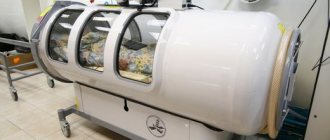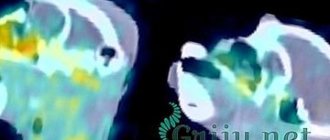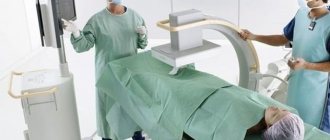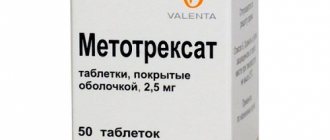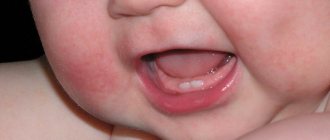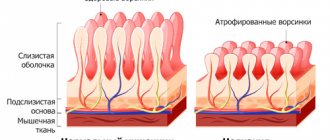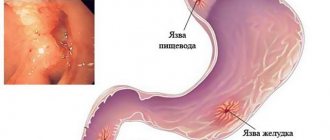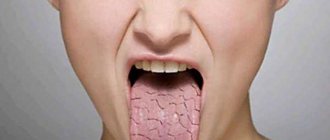What factors contribute to the development of gallstone disease?
- Belonging to the female gender. According to statistics, women get sick 2-3 times more often than men. Pregnancy and childbirth also increase the chance of developing this disease.
- Age. The risk of developing the disease increases every year by 1% in women and 0.5% in men
- Hereditary predisposition.
- Excess body weight.
- Excessive nutrition with a predominance of fatty foods.
- Low-calorie diets.
- Lipid metabolism disorders.
- Hormonal disorders.
- Taking medications (fibrates, hormonal contraceptives, octreotide).
- Chronic diseases of the intestines and pancreas.
- Anatomical changes in the biliary system.
- Chronic inflammatory diseases of the biliary tract.
- Functional biliary disorders.
- Endocrinological pathology (diabetes mellitus, hypothyroidism).
If 2 or more points from this list are true for you, then you are at risk.
Don't take risks.
Contact a gastroenterologist for an initial examination.
Why is a doctor's examination necessary?
The first stages of gallstone disease are often not accompanied by pronounced symptoms or are asymptomatic for 10-15 years. The patient feels great and does not suspect that he already needs the help of a specialist.
By ignoring this, you lose the chance to suppress the disease with little effort and without serious consequences for the body.
Detection of violations of the composition of bile (the presence of thick bile in the gallbladder) during this period is perfectly treatable and prevents the formation of stones, which means it minimizes the risk of surgical intervention in the future!
Treating complications and advanced stages is longer, more difficult and more expensive.
Stages of gallstone disease
Stage I - initial or pre-stone
At this stage, it is possible to identify thick heterogeneous bile in the gallbladder, the formation of biliary sludge, the presence of putty-like bile, and a combination of putty-like bile with microliths.
If you skip treatment at this stage,
gallstones begin to form.
If you start treatment
It becomes possible to normalize the rheological properties of bile. It is possible to prevent the process of stone formation and further development of the disease.
Patients diagnosed with stage I are advised to consult a gastroenterologist-hepatologist:
- to determine treatment tactics
- to control the properties of bile, functions of the gallbladder and biliary system
Stage II - formation of gallstones
At this stage, the examination reveals the presence of gallstones:
- in the gallbladder, in the common bile duct, in the hepatic ducts
- by number of stones: single, multiple
- composition: cholesterol, pigment, mixed
The clinical picture is determined - in what form the disease manifests itself:
- latent (hidden) course of the disease
- painful form with typical biliary colic
- dyspeptic form (the patient complains of a feeling of heaviness or a feeling of fullness in the right hypochondrium)
- gallstone disease occurs under the guise of other diseases
If you skip treatment at this stage,
in the future, surgical intervention will become inevitable.
If you start treatment
It becomes possible to dissolve cholesterol stones without resorting to surgery. Complications can be prevented.
Patients are advised to consult a gastroenterologist-hepatologist to prescribe treatment.
If there are indications, a gastroenterologist-hepatologist will schedule a joint consultation with a surgeon to determine further treatment tactics.
Stage III - chronic recurrent calculous cholecystitis
In case of frequent exacerbations of the disease, a joint consultation with a surgeon and a gastroenterologist-hepatologist is indicated to resolve the issue of surgical treatment and special preparation for surgery.
Stage IV - complications
A joint consultation between a surgeon and a gastroenterologist-hepatologist is indicated.
Principles of drug therapy
In some cases, the disease can be treated without surgery.
The following medications are used to destroy stones and relieve acute symptoms:
- Ursodeoxycholic acid preparations: Ursofalk, Ursosan, Urosan. Medicines prevent the formation of cholesterol crystals in the gallbladder and normalize the balance of bile acids and cholesterol. They are used in the presence of stones up to 1 cm in diameter and a small number of them
. Contraindicated during pregnancy. - Chenodeoxycholic acid agents: Henosal, Henochol, Henofalk. They help suppress the formation of cholesterol in liver cells, therefore they are effective against stones of cholesterol origin.
To eliminate pain, antispasmodics are prescribed in the form of tablets and injection solutions: No-shpa, Papaverine. Such means are not allowed to be used independently. Treatment should be carried out under the supervision of a specialist.
Symptoms
Very often, especially in the initial stages, cholelithiasis does not make itself felt and does not bother the patient. In more than half of patients, gallstones are discovered incidentally during examination for other diseases.
Symptoms usually appear at more advanced and dangerous stages of the disease. Therefore, if you observe any of the following, you are recommended to consult a gastroenterologist.
Minimal manifestations of cholelithiasis:
- heaviness in the abdomen (heaviness in the right hypochondrium)
- belching
- nausea
- constipation
- flatulence
Gallstone disease develops slowly over years. Her symptoms increase gradually. For several years, you may feel heaviness in the right hypochondrium after eating (especially when eating fatty, fried meat, smoked, salted, pickled foods, as well as wine). In the future, nausea, vomiting and sharp acute cramping pain in the right hypochondrium - hepatic colic - may join the unpleasant sensations.
If you observe a similar situation in yourself, do not put your health at risk and do not expect complications - consult a gastroenterologist.
Medical nutrition scheme
Proper nutrition is considered a key point in the treatment of any disease, especially for pathologies of the digestive system.
Meals for cholelithiasis should be small and frequent. It is strictly forbidden to consume: fatty, salty, spicy, fried foods, alcohol, strong tea, coffee, carbonated drinks, fatty dairy products, spices, mushrooms, spices, legumes in any form.
Food should be consumed warm.
The first few weeks after crushing or surgery, the diet should consist of pureed soups, cereals, and stewed vegetables. Gradually, pasta, low-fat meat and fish, butter and milk in small quantities are introduced into the menu.
Gallstone disease is a dangerous pathological condition, which, if treated incorrectly or without it, leads to many dangerous complications, including death.
Gallstone disease (cholelithiasis) is a disease that is accompanied by the formation of calculi (stones) in the gallbladder or bile ducts. Cholelithiasis is also called cholelithiasis.
Unfortunately, today this disease is very common. As a person ages, the risk of developing this disease increases.
. In addition, cholelithiasis is more common in females.
Among all diseases of the digestive system of the body, cholelithiasis occupies one of the first places due to its widespread prevalence. The disease is treated by a gastroenterologist,
Serious manifestations of cholelithiasis
This may be severe pain in the upper abdomen, which is accompanied by nausea and vomiting that does not bring relief (biliary or hepatic colic).
The symptoms described above may include: jaundice (mucous membranes and skin turn yellow), itching, change in urine color to a darker color, lightening of stool (blockage of the common bile duct with a stone is the most common complication of biliary colic)
If you experience these symptoms, it is highly likely that you have gallstone disease at an advanced stage.
The described complications require surgical intervention, because lead to death.
Unfortunately, some of the negative consequences of the disease will last a lifetime - even if you receive the highest quality medical care. After surgery to remove the gallbladder (cholecystectomy), approximately half of patients experience persistent pain, nausea and other unpleasant symptoms. This condition is called postcholecystectomy syndrome (PCES), and finding the cause of its development is the task of a gastroenterologist and ultrasound doctor. To solve this problem, an ultrasound method is used - dynamic echo-choledochography (ultrasound of the bile ducts).
Do not delay your visit to a gastroenterologist.
Take care of your health today!
Complications of gallstone disease
Patients often know that they have stones in their gall bladder. However, if the stones do not cause any symptoms, or these symptoms appear rarely and do not affect the quality of life, patients prefer not to pay attention to it.
If you do not pay attention to this, the very first attack of biliary colic can lead to very serious complications:
- Obstructive jaundice - stones from the gallbladder enter the ducts and prevent the flow of bile into the duodenum. Accompanied by acute, excruciating pain in the upper abdomen, yellowing of the eyes and skin, darkening of urine, and lightening of feces. This condition is dangerous because stagnation of bile occurs in the system of intrahepatic and extrahepatic bile ducts. Against this background, the liver is affected, and its cells begin to destroy (hepatitis develops). If bile stagnation continues for a long time, it leads to impaired liver function and subsequently to liver failure.
- Choledocholithiasis is the formation of stones in the bile ducts or their entry into the ducts from the gallbladder. A common complication, accompanied by increased pain, nausea, and vomiting, which does not bring relief.
Biliary colic is accompanied by the condition:
- Biliary pancreatitis. The pancreatic duct, through which enzymes are secreted, connects with the common bile duct and together, through one opening (the major duodenal papilla), they flow into the duodenum. The entry of stones into the common bile duct below the level of the confluence of the pancreatic duct is accompanied by the occurrence of inflammation of the pancreas.
- Stenosing pappilitis. This is a cicatricial narrowing of the large duodenal papilla, most often occurring against the background of its traumatization by small stones passing through it. The development of such a complication is accompanied by severe symptoms: frequent painful attacks, possible development of jaundice, pancreatitis, inflammation of the gallbladder and bile ducts.
- Cholangitis. This is an inflammation of the common bile duct. In this case, intoxication and fever are added to all the symptoms described above.
- Cholecystitis. Inflammation of the gallbladder. The most common complication. Accompanied by acute pain, nausea, vomiting, fever, intoxication
Other complications
Clinical picture
rice.
4 - Opened gallbladder filled with stones: a single cholesterol-pigment stone in the narrowed cavity of the gallbladder - the wall of the bladder is thickened, on the inner surface there are bedsores (indicated by arrows) Fig. 5 - Opened gallbladder filled with stones: small faceted cholesterol-pigment stones fig. 6 - Opened gallbladder filled with stones: large mixed stones. Clinical manifestations of Zh. b. are extremely diverse, and therefore the following wedges and forms of cancer are conventionally distinguished: chronic pain; dyspeptic chronic; biliary (hepatic) colic; other wedge, forms, including latent, so-called. angina pectoris, and Saint's triad.
The painful chronic form of cholelithiasis can occur in the presence of the so-called. small signs, among which dyspeptic disorders and malaise are usually observed. Dyspeptic symptoms (a feeling of heaviness in the epigastric region 1 to 3 hours after eating, bloating, diarrhea that occurs after eating, especially fatty foods) occur periodically. Sometimes aching pain appears in the pit of the stomach and in the area of the right hypochondrium, also in connection with eating, spreading to the back and right shoulder blade. During this period, with deep palpation, some pain sensations are detected in the right hypochondrium, pain points are identified (in the epigastric region, in the gall bladder, at the pancreatic-gallbladder point, at the point of the phrenic nerve, etc.). The diagnosis is confirmed by X-ray examination (see Gallbladder, X-ray diagnostics).
Dyspeptic chronic, form Zh. b. in the absence of pain of characteristic localization, it is accompanied by complaints indicating functional disorders of the activity of the gastrointestinal tract. tract - heartburn, a feeling of heaviness in the stomach, unstable stools, steatorrhea, flatulence.
The most typical symptom of gallstones is an attack of biliary (hepatic) colic. The provoking role in the occurrence of an attack belongs to negative emotions, consumption of fats, spices, hot seasonings, harsh physical activity. movements, as well as work in an inclined position. In women, colic often coincides with menstruation or occurs after childbirth. Pain in gastrointestinal tract, as a rule, occurs suddenly, often at night, is localized in the right hypochondrium, less often under the xiphoid process or to the right of it with characteristic irradiation to the right scapula and subscapular region, shoulder, neck, jaw, frontal region, right eye. Less commonly, the pain radiates to the left, to the region of the heart, provoking an attack of angina. The pain is usually severe, stabbing, tearing, cutting in nature, and shock may develop. An attack of biliary colic is sometimes accompanied by repeated vomiting.
During a painful attack, the abdomen is swollen, the abdominal wall is tense, more sharply in the area of the gallbladder projection. In the elderly and weakened patients, tension may be absent. Characterized by sharp pain on palpation in the right hypochondrium. Once the pain subsides, it is possible to palpate the enlarged, painful liver, and sometimes the gall bladder. The skin over the gallbladder area is painful. Many patients exhibit typical symptoms: Mussy (pain when pressing between the legs of the right sternocleidomastoid muscle), Ortner (sharp pain when tapping a finger in the right hypochondrium or directly along the costal arch). Pain is often detected at the cystic point (the intersection of the right rectus abdominis muscle with the costal arch), as well as when pressing under the lower angle of the right scapula and on the right at the spinous processes of the VIII - XI thoracic vertebrae.
When examining a patient, tachycardia and muffled heart sounds are often noted; less often - bradycardia, extrasystole, gallop rhythm.
Often, even with an uncomplicated infection of gallstones, biliary colic is accompanied by a rapid and significant rise in temperature; The fever does not last long.
The duration of a painful attack in uncomplicated gallstone disease varies - from several minutes to several hours, and in some patients up to 2 days. In most cases, after the attack stops, examination of the gallbladder and liver fails to establish any abnormalities and the patients feel healthy. Sometimes weakness and weakness remain for some time. In rare cases, biliary colic ends in the release of a stone (no more than 1 cm in diameter) into the intestine, which can be detected in the stool after 1 - 2 days. The end of the attack may be accompanied by the release of copious amounts of light-colored urine.
Obstruction of the bile ducts, in which biliary colic is the leading symptom, has a number of additional signs: the gallbladder fills with bile and becomes accessible to palpation. With duodenal intubation (see), carried out outside the period of severe pain, it is not possible to obtain cystic bile. Blockage of the common bile duct is characterized by the development of jaundice (see), hypercholesterolemia, hyperphosphatasemia. In the presence of a valve stone, intermittent jaundice occurs with increasing and weakening of the color of the skin. Hyperbilirubinemia is detected (see), skin itching occurs, and with a long course - the phenomenon of hemorrhagic diathesis (see).
When the hepatic ducts are blocked, wedge, the picture is less typical, laboratory and instrumental studies turn out to be of little information. When an infection occurs, the temperature rises; in the blood - leukocytosis, ROE accelerates.
So-called angina pectoris is observed in elderly people with coronary heart disease and disappears after cholecystectomy. Saint's triad is a combination of J. b. with diaphragmatic hernia and diverticulosis of the colon (see Saint's syndrome).
Flow of life. b. varied in severity and frequency of attacks. G., not complicated by infection and obstruction, once manifested by an attack of biliary colic, may never bother the patient again, although usually attacks are repeated: in some cases they follow one another with short intervals, in others they occur 1-2 times a day. a year, sometimes less. They may be caused by the patient’s poor lifestyle and diet, unfavorable working conditions, the presence of negative emotions and other factors. Some patients may experience spontaneous recovery. after a small stone passes into the intestines.
In what cases is it necessary to be examined?
- For chronic diseases of the gastrointestinal tract.
- If one of your close relatives suffers from cholelithiasis.
- With excess body weight.
- For rapid weight loss (for example, for the purpose of losing weight).
- In case of poor nutrition (eating 1-2 times a day, taking insufficient amounts of liquid, preferring fatty, fried, spicy, smoked, salty foods).
- In case of lipid metabolism disorders (hypercholesterolemia, dyslipidemia).
- With long-term use of fibrates, hormonal contraceptives.
- For anatomical abnormalities in the biliary system.
- For diabetes mellitus, thyroid diseases.
- After pregnancy and childbirth.
Any of the listed factors is a reason to consult a gastroenterologist-hepatologist. Don't expect complications.
Prevention
For the prevention of gallstone disease, a general hygienic regime, systematic physical work, exercise, proper nutrition (eating vegetables, low-fat, cholesterol-poor and protein-rich foods, regular meals), combating obesity, infections and disorders of the gastrointestinal tract, timely elimination of stagnation of bile, mental stress.
Bibliography:
Vishnevsky A. A., Grishkevich E. V. and Sarkisov D. S. Chronic calculous cholecystitis and its surgical treatment, L., 1967, bibliogr.; Galeev M. A. Gallstone disease, Ufa, 1975, bibliogr.; Galkin V.A., Lindenbraten L.D. and Loginov A. S. Recognition and treatment of cholecystitis, M., 1972, bibliogr.; Gloucal L. Diseases of the gallbladder and biliary tract, trans. from Czech, Prague, 1967; Komarov F. P., Ivanov A. I. and Barchuk V. A. Macromolecular complex of bile and its clinical significance, Ter. arkh., t. 46, no. 3, p. 107, 1974, bibliogr.; Lidsky A. T. Surgical diseases of the liver and biliary system, M., 1963; Nogaller A. M. Diseases of the gallbladder and biliary tract, M., 1969, bibliogr.; Ochkin A. D. Gallstone disease, cholecystitis and their surgical treatment, M., 1949, bibliogr.; Permyakov N.K. and Podolsky A.E. Cholesterosis of the gallbladder, M., 1969, bibliogr.; Petrov B. A. and Galperin E. I. Surgery of extrahepatic bile ducts, M., 1971, bibliogr.; Skuya N. A. Chronic diseases of the biliary tract, L., 1972, bibliogr.; Smirnov E.V. Surgical operations on the biliary tract, L., 1974, bibliogr.; aka, Errors, dangers and complications during operations on the biliary tract, M., 1976; Fedorov S.P. Gallstones and surgery of the biliary tract, L. - M., 1934, bibliogr.; Tskhakaya Z. A., Vinogradov V. V. and Mamamtavrishvili D. G. Surgery of choledocholithiasis, Tbilisi, 1976, bibliogr.; Eisert A., Petri I. u. Bodnar A. Choledochoduodenostomia externa in der operationen Behandlung der Choledocholithiasis, Zbl. Chir., S. 812, 1974; Grosse H. Die Cholelithiasis, Jena, 1966; Linden W.a. Nakayama F. Occurence of cholesterol crystals in human bile, Gut, v. 15, p. 630, 1974, bibliogr.; Mallet Guy P. Sur 1272 operations pour lithiase de la voie biliaire principale, Lyon chir., t. 71, p. 155, 1975; Zuhlke Y., Fuchs K.u. Peiper HJ Atiologie und Therapie der Rohrenstenose der Choledochus, Chirurg, S. 168, 1974.
N. A. Skuya; O. B. Milonov (surgeon).
Diagnosis of cholelithiasis
First diagnostic stage:
Consultation with an experienced gastroenterologist-hepatologist who will listen to you carefully, find out your medical history, conduct an objective examination, and determine the scope of the necessary additional examination.
Second diagnostic stage:
Laboratory and instrumental studies:
- general blood and urine test
- biochemical blood test
- scatological research
- fibrogastroduodenoscopy
The leading role in diagnosis belongs to ultrasound examination of the gallbladder, which makes it possible to determine the size and shape of the gallbladder, the thickness of its wall, the number of stones and their size.
Third diagnostic stage:
Based on the data obtained, the gastroenterologist will provide extended recommendations on diet, maintaining a healthy lifestyle, planned drug therapy, and, if necessary, refer you for a consultation with a surgeon.
Such diagnostics in our clinic helps the patient resolve the following issues:
- determining the stage of gallstone disease
- diagnosis and treatment of concomitant diseases
- Based on the results of the study, recommendations will be made on following a diet, maintaining a healthy lifestyle, and planned drug therapy, which will improve well-being and lead to recovery
- determination of indications for surgical treatment
Treatment of cholelithiasis
Treatment tactics depend on the stage of the disease
The most effective treatment method is treatment in the early stages, when the disease can be controlled by both non-drug (regimen, diet) and drug treatments.
In later stages, there is a high risk of developing serious complications that can lead to disability or even death. At these stages, surgical treatment is inevitable.
In stage I of cholelithiasis the following are indicated:
Consultation and observation of a gastroenterologist-hepatologist, during which you will receive prescriptions and recommendations:
- for an active lifestyle - physical exercise promotes the outflow of bile, eliminates its stagnation, and reduces hypercholesterolemia
- to normalize body weight
- for the correction of endocrine disorders (hypothyroidism, diabetes mellitus, estrogen metabolism disorders, etc.)
- to stimulate the synthesis and secretion of bile acids by the liver, normalize the physicochemical composition of bile.
In stage II of cholelithiasis the following are indicated:
Consultation and observation of a gastroenterologist-hepatologist, during which you will receive prescriptions and recommendations:
- in clinical nutrition
- to normalize body weight, combat physical inactivity
- for correction of lipid metabolism
- on medicinal dissolution of stones using bile acid preparations
In stage III of cholelithiasis the following are indicated:
Consultation and observation of a gastroenterologist-hepatologist, during which you will receive prescriptions and recommendations:
- on therapeutic nutrition and normalization of body weight
- for correction of lipid metabolism and drug dissolution of stones
- for relieving an attack of biliary colic
The decision on surgical treatment is made during a joint consultation with a gastroenterologist-hepatologist and a surgeon.
Stage VI of cholelithiasis - surgical treatment
To prescribe surgical treatment, a joint consultation with a surgeon and a gastroenterologist-hepatologist is required. During this consultation, tactics for such treatment will be developed and issues related to preparation for treatment will be resolved.
Indications for surgical treatment of patients with cholelithiasis are:
- acute calculous cholecystitis
- common bile duct stones
- gallbladder gangrene
- intestinal obstruction
- chronic calculous cholecystitis with a non-functioning gallbladder (“disabled” gallbladder)
The operation is also indicated in cases where early clinical symptoms of calculous cholecystitis appear (colic, fever, lack of stable remission between attacks).
The following types of treatment are currently used:
- open and laparoscopic cholecystectomy
- choledistolithotomy
- cholecystostomy
- papillosphincterotomy
The choice of treatment tactics is determined by the coordination of actions between the gastroenterologist-hepatologist and the surgeon.
Stages of treatment in stage IV gallstone disease
Non-surgical stage
A gastroenterologist guides the patient from the moment the very first asymptomatic signs of the disease are identified.
Why does the gastroenterologist together with the surgeon make the decision to remove the bladder?
At the EXPERT Polyclinic, a joint consultation is held between a surgeon and a gastroenterologist and further tactics are jointly determined.
Only a gastroenterologist has complete information about the condition of the patient’s gallbladder. When prescribing treatment (including prescribing surgery), factors such as:
- clinical manifestations
- duration of the disease and its stage
- size of stones, their number, factor of the presence of stones in the gallbladder ducts
- the number of biliary colics in the anamnesis, the presence of complications and concomitant pathologies
After clarifying all the above factors, it is possible to determine the treatment tactics for a particular patient.
Surgical stage
Removal of the gallbladder is carried out on a planned or emergency basis.
Planned surgical treatment
It is carried out after appropriate preoperative preparation, relief (suspension) of cholelithiasis complications using conservative therapy. The purpose of preparation is to adapt the patient’s body to the upcoming operation (remove inflammation in the gallbladder). In this case, removal of the gallbladder will occur with minimal consequences for the patient (the risk of postoperative complications is greatly reduced).
On an emergency basis
Surgeries are performed when complications of cholelithiasis develop, which without urgent intervention will lead to death. This type of intervention is considered the most traumatic for the body and recovery may take longer.
When deciding on planned surgical treatment, the gastroenterologist carries out the preoperative preparation stage.
Preparation minimizes the risks of complications and facilitates the course of a surgical procedure that is traumatic for the body.
Post-surgical stage
Accompanying the patient after surgery.
Periodic examinations are recommended during which a gastroenterologist monitors the patient’s condition and disease activity. This will allow the doctor to adjust treatment in time if post-surgical complications occur.
Why do you need the help of a gastroenterologist at the postoperative stage?
First of all, a specialist:
- will stop the development of complications of the postoperative stage (medication)
- will help the patient adapt to life without gallstones
- will create an individual diet for the patient
- will give recommendations regarding lifestyle
- will monitor the patient's condition using routine diagnostics. If complications recur, the gastroenterologist will prescribe appropriate treatment.
With the gallbladder removed, the patient needs constant regular monitoring, as this affects his quality of life.
Without the help of a gastroenterologist or if his recommendations are not followed, the life of a patient with postcholecystectomy syndrome can turn into a hellish series of diarrhea and unbearable abdominal pain.
In order not to fall into a wave of complications and further problems, these patients should not forget about the need for constant regular monitoring by a gastroenterologist.
If after surgical treatment the symptoms of cholelithiasis persist, this is an alarming sign in which it is necessary to consult a gastroenterologist as soon as possible. Most often, this is due to already developed complications of cholelithiasis and require timely diagnosis and proper treatment.
If the surgical intervention is performed on time (not for emergency reasons, before serious complications develop), then no discomfort will arise. However, this does not mean that after surgery there is a cure for cholelithiasis. Therefore, in order to prevent the re-formation of stones, only not in the gallbladder, but in the bile ducts, it is necessary to be observed by a gastroenterologist, undergo an annual examination, first of all, an ultrasound examination of the bile ducts (dynamic echo-choledochography) and, if necessary, conduct courses therapy.
Consequences after gallbladder removal
Why do you need the help of a gastroenterologist at this stage?
After cholecystectomy (removal of the gallbladder), postcholecystectomy syndrome may develop.
Occurs in 10-30% of patients undergoing surgery. This syndrome greatly affects the patient’s quality of life. For example, improper food intake provokes severe bouts of diarrhea and abdominal pain. People suffering from postcholecystectomy syndrome have to follow a strict diet and adjust their rhythm of life to it.
At this stage, the help of a gastroenterologist will make the patient’s life much easier. However, following all the doctor’s recommendations, in any case, requires enormous effort from the patient throughout his life.
More about postcholecystectomy syndrome
The development of postcholecystectomy syndrome is influenced by many factors, including the timeliness and quality of surgical treatment.
Postcholecystectomy syndrome includes functional disorders, organic lesions associated with relapse of the disease or concomitant diseases (chronic pancreatitis, peptic ulcer). Most often it manifests itself as persistent pain, sometimes nausea, bloating, belching, bitter taste in the mouth, heartburn, and diarrhea.
The risk of developing this syndrome is very high in those who had a complicated course of cholelithiasis and were operated on against the background of an inflammatory process as an emergency for health reasons. Moreover, the syndrome is organic in nature, and choosing adequate therapy to eliminate disturbing symptoms is usually not easy. To find out the exact cause of the development of PCES, dynamic echo-choledochography (ultrasound of the bile ducts) is used as the start of the examination.
If the gallbladder is removed as planned, after appropriate preoperative preparation, then the chance of developing postcholecystectomy syndrome is sharply reduced. And if disturbing symptoms arise, most likely they will be functional in nature, proceed more favorably and, if all the recommendations of the gastroenterologist are followed, will not affect well-being and quality of life.
Why is it recommended to treat cholelithiasis at the EXPERT Polyclinic?
What will you get by contacting us:
- effective and safe treatment
- modern diagnostic equipment
- gastroenterologists of the highest category, specializing in the treatment of this type of disease.
- joint consultation with a surgeon and a gastroenterologist
- an individual treatment program, in accordance with the condition of the disease and the characteristics of your body
When treating cholelithiasis, the doctor-curator of the EXPERT Polyclinic is ready to accompany you at all stages of treatment. From the initial consultation to the period of post-surgical intervention, you can always count on the help and support of your supervisor.
Prevention and lifestyle recommendations
- Compliance with the regime, diet: eating every 3-4 hours, excluding long periods of fasting, drinking enough liquid per day. A nutritionist will help you create the right nutrition program.
- Avoid fatty and fried foods, smoked foods, and strong alcohol.
- Include dietary fiber in your diet.
- Maintain an active lifestyle, exercise.
- Bring your body mass index to a normal value.
- Don't lose weight quickly, do it gradually.
- If possible, avoid taking medications that promote stone formation (oral contraceptives, antibiotics, fibrates).
- If you have diabetes, try to keep it in the compensation stage.
Diet rules for exacerbation of cholelithiasis
The main requirements are adherence to the regime and the exclusion of prohibited foods from the diet, and it is also important to minimize foods that can be eaten in limited quantities for cholecystitis and chronic cholelithiasis. Gallstone stagnation often exacerbates other pathologies. During this period, the patient is transferred to diet No. 5-a. This diet is also used if there has been surgery (cholecystectomy) and the gallbladder has been removed. The usual course of diet therapy lasts up to 2 weeks.
The diet for exacerbation of gallstone disease is based on the following principles:
- eating all food pureed;
- refusal of juices and fresh fruits, berries, raw vegetables;
- additional intake of vitamin-mineral complexes.
If the gallbladder has not returned to normal functioning within 14 days, the duration of the course is extended. The first week after finishing the diet is preparing the digestive system for table No. 5. You must continue to puree solid foods and gradually introduce those dishes that the doctor allows.
Dietary recommendations
- Sugar is a source of endogenous cholesterol and should be avoided.
- Increase your intake of proteins balanced in amino acid composition.
- Increase your intake of plant proteins: oatmeal and buckwheat, seaweed.
- Accustom yourself to regularly eating plant fibers.
- Avoid eating legumes, animal fats, and coffee.
- Skipping breakfast increases the risk of developing gallstones.
- Vitamins E and C reduce the likelihood of gallstone formation.
Unfortunately, in order to forget about gallstone disease in later stages, it is not enough just to follow the correct regimen and diet. Any doctor will tell you that “this is only an additional therapy, not the main treatment.”
If you have:
Nothing hurts. A deformation in the gallbladder was accidentally discovered
Deformation of the gallbladder is often related to anatomical features and can be asymptomatic for a long time. At the same time, there may be a violation of the outflow of bile from the gallbladder, oversaturation of bile with cholesterol, the formation of sediment, putty-like bile, and the formation of biliary sludge, which is the most important condition for the formation of gallstones. Over time, complaints may arise:
- for a periodic feeling of discomfort or dull pain in the right hypochondrium
- bitterness in the mouth
- flatulence
- unstable stool with a tendency to diarrhea.
In this case, an active lifestyle, physical exercise, and normalization of body weight are recommended. A consultation with a gastroenterologist is necessary in order to select drug therapy (if necessary), recommendations for proper nutrition, and further observation.
Nothing hurts. We accidentally discovered flakes, thick bile, and biliary sludge in the gallbladder
In approximately half of patients, biliary sludge does not cause any symptoms and is detected only by ultrasound of the gallbladder. Many patients do not attach importance to this pathology and do not consult a doctor. Meanwhile, the long-term existence of biliary sludge in more than half of patients can be complicated by biliary pancreatitis, dysfunction or stenosis of the sphincter of Oddi, acute cholecystitis, cholangitis, and gallbladder shutdown. 20% develop gallstones. To prevent the development of cholelithiasis and complications, timely consultation with a gastroenterologist-hepatologist is recommended. As a result, the causes that contribute to the formation of biliary sludge and the development of complications will be identified and eliminated.
There are complaints. Deformation of the gallbladder, flakes, thick bile, biliary sludge in the gallbladder were detected
If complaints arise, it is often not enough to make do with recommendations for lifestyle changes, moderate physical activity, and normalization of body weight. A consultation with a gastroenterologist is necessary in order to select drug therapy that will improve the excretion of bile from the gallbladder, relieve pain, prevent the formation of gallstones and the development of complications in the future, and, as a result, avoid surgical treatment in advanced cases.
The stones were identified a long time ago, but nothing bothers me
Latent (asymptomatic) stone carriage requires long-term observation by a gastroenterologist-hepatologist:
- to determine indications for gene therapy - medicinal dissolution of stones using bile acids (in the presence of cholesterol stones)
- for an ultrasound scan, which will determine the size and shape of the gallbladder, the thickness of its wall, the number of stones and their size
- to determine the dynamics of these indicators over time
If necessary, a joint consultation with a surgeon is held and indications for surgical treatment are determined.
There are complaints. Gallstones detected
Immediately consult a gastroenterologist, where a specialist will determine:
- indications for drug dissolution of stones
- will select therapy to relieve the patient’s complaints
- will reveal metabolic disorders underlying stone formation.
The success of conservative therapy for cholelithiasis is determined by strict adherence to recommendations and the correct selection of litholytic therapy. The effectiveness of treatment is monitored by a gastroenterologist-hepatologist using ultrasound examination, which must be carried out throughout the entire course of treatment. After completing the drug course of dissolving stones, in rare cases, relapse of stone formation is possible. Therefore, to prevent relapse, the gastroenterologist creates supportive and preventive therapy.
Heaviness, discomfort, pain under the “spoon” and in the right hypochondrium
These complaints are quite nonspecific and may be present in diseases of the liver, pancreas, stomach, duodenum, gall bladder (including cholelithiasis).
If you are concerned about heaviness, discomfort, pain in the pit of the stomach and in the right hypochondrium, you need to seek help from a gastroenterologist-hepatologist who:
- will find out the history of the disease
- will conduct objective research
- will determine the scope of necessary additional examination
There are stones, there was 1 colic
Mandatory observation by a gastroenterologist-hepatologist:
- to prescribe the necessary treatment
- to control the situation and constant monitoring
This simple measure:
- reduces the risk of recurrent colic
- prevents the development of disease and complications
There are stones, there were 2 colics
Repeated biliary colic, a relapsing course of the disease, increases the risk of complications and the risk of death by almost 4 times.
In this case, mandatory observation by a gastroenterologist-hepatologist together with a surgeon is indicated:
- to determine treatment tactics
- if necessary – to resolve the issue of surgical treatment
It is necessary to remove the gallbladder - what to do?
When preparing for a planned cholecystectomy, a joint consultation with a gastroenterologist-hepatologist and a surgeon is necessary:
- to determine the presence of indications and contraindications for surgical intervention
- if necessary - to draw up a plan for additional examination
In case of a decision on surgical treatment, it is important to perform a number of instrumental and laboratory tests, which are included in the standard examination before surgery.
The gallbladder has already been removed. Do I need to see a doctor, and which specialist should I see?
The gallbladder is an important organ of the gastrointestinal tract. In its absence, the following are often observed:
- change in hormonal function
- change in concentration function
- disorders associated with changed conditions of food absorption in the intestines.
This leads to disturbances in motility and secretory function of the stomach, ulcerative lesions of the stomach or duodenum, duodenitis, pancreatitis, intestinal lesions, disturbances in the metabolism of fat-soluble vitamins, protein and carbohydrate metabolism, fat metabolism and calcium metabolism.
Patients who have undergone cholecystectomy (that is, surgical removal of the gallbladder) require constant monitoring by a gastroenterologist-hepatologist.
In most cases, removal of the gallbladder does not relieve the patient of metabolic disorders underlying stone formation. The separated bile contains many cholesterol crystals and remains thick and viscous. After surgery, the pathological processes underlying cholelithiasis occur in new conditions: due to the absence of the gallbladder, the physiological function it performs is no longer possible, the motility of the biliary tract is impaired, and there is no regulation of the processes of bile formation and bile excretion.
Loss of the physiological role of the gallbladder, namely the lack of concentration of bile during the interdigestive period and its release into the duodenum during meals, is accompanied by impaired excretion of bile and indigestion. Changes in the chemical composition of bile and its chaotic entry into the duodenum disrupt the digestion and absorption of lipids, reduce the bactericidal properties of intestinal contents, which leads to microbial contamination of the duodenum and weakened growth of normal intestinal microflora.
In this regard, the patient may be concerned about:
- nausea
- vomit
- heartburn
- bitter feeling in the mouth
- flatulence
- unstable chair
- constipation
- frequent loose stools
- stomach ache
Excessive bacterial growth in the intestines leads to disturbances in protein, carbohydrate and fat metabolism, calcium metabolism and fat-soluble vitamins. This results:
- to frequent heavy diarrhea
- to weight loss
- to osteoporosis (disorders of bone mineralization)
- to vitamin deficiencies, which are manifested by loss of skin elasticity, fine wrinkles, peeling, depigmentation, dry skin, damage to the lips (hyperemia, swelling, peeling, formation of cracks and crusts, weeping in the corners of the mouth), damage to the tongue (ulceration of the papillae, the appearance of cracks), damage to gums (looseness and bleeding, weakening of teeth and their loss)
At least once every 4 months - with this frequency, regular observation by a gastroenterologist-hepatologist and ultrasound of the bile ducts (dynamic echo-choledochography) after cholecystectomy are recommended for early diagnosis of possible complications.
A year after removal of the gallbladder, the same symptoms appeared: pain in the right side, nausea, loose stools
In patients after removal of the gallbladder, the existing clinical manifestations may be associated with a number of factors:
- changes in the chemical composition of bile
- impaired excretion of bile into the duodenum
- impaired motility of the biliary tract
- excessive growth of pathogenic microflora in the intestines
- disruption of food digestion and nutrient absorption
In this case it is necessary:
- consultation with a gastroenterologist-hepatologist
- specialized ultrasound examination (dynamic echo-choledochography)
- subject examination
- complex treatment
- further long-term follow-up
Etiology and pathogenesis
Gallstone disease is a polyetiological disease. The interaction of factors such as genetic predisposition, poor nutrition, metabolic disorders, infection, bile stasis, etc., is a prerequisite for changes in physical-chemical. properties of bile - dyscholia, when the cut bile (see) becomes lithogenic, i.e. capable of forming stones.
Normal hepatic bile may acquire lithogenicity in the gallbladder (cholecystogenic dyscholia) or temporarily become lithogenic due to disruption of the regular hepatic-intestinal circulation of the main components of bile. At the same time, the so-called cholate-cholesterol index - the ratio between the content of bile acids (see) and cholesterol (see) in bile. Cholesterol is insoluble in water and is retained in bile only due to bile acids, which have high surface activity, and lecithin. With a lack of bile acids, cholesterol precipitates, giving rise to the formation of stones. There is an opinion that with Zh. the liver produces lithogenic bile (hepatic dyscholia). According to many authors, electrophoretic determination of the macromolecular (lipid) complex of bile, compared with the norm, revealed a decrease in indicators in both hepatic and cystic bile in gallstones. In addition, it was found that with Zh. the activity of hydroxy-3-methylglutaryl-CoA reductase, an enzyme involved in the synthesis of cholesterol, in the liver is increased, and the activity of 7-alpha-hydroxylase, involved in the synthesis of bile cells, is reduced. In some patients, the presence of cholesterol stones is caused by diseases of the gallbladder, gall. tract. Pavel (I. Pavel, 1962) early stage of life. considers a disorder of the release and absorption of substances by the wall of the gallbladder. N.A. Skuya in 1966, 1972 established the role of local allergization of the gallbladder wall (colibacillary and autoimmune origin) in the development of discrinia, cholecystogenic dyscholia and stone formation. The latter is also facilitated by gallbladder infection, bile stagnation and cholesterol metabolism disorder. Dietary factors are important in the formation of gallstones: irregular diet, high calorie food, consumption of cholesterol-rich foods. In 10-27% of cases, G. b. pigment stones consisting mainly of calcium bilirubinate are found in the gallbladder. Increased hemolysis during hemolytic disease, repeated blood transfusions, etc. leads to an increase in the amount of bilirubin in bile and its precipitation. The enzyme beta-glucuronidase (bacterial, liver origin), secreted by the mucous membrane of the gallbladder, hydrolyzes bilirubin glucuronide. From free bilirubin and calcium in bile, calcium bilirubinate is formed, which serves as a center for apresation and stone formation, which is also facilitated by bile stasis and infection (see Gallstones).
One of the first experimental models of calculous cholecystitis was created by P. S. Ikonnikov in 1915; as a result of ligation of the cystic duct in dogs with the introduction of E. coli and other microbes into the bladder cavity, purulent cholecystitis developed, and after 3-4 months. gallstones formed. Other researchers used various methods: using an infectious agent (V. A. Galkin, A. S. Chechulin, 1960; V. V. Silakova, R. K. Marchenko, 1962); with dysfunction of the sphincter of the common bile duct (sphincter of Oddi) (H. H. Anichkov, M. A. Zakharyevskaya, 1938); with the creation of aseptic stagnation of bile (D. A. Brusilovskaya, 1948); with the introduction of a foreign body into the cavity of the gallbladder [Rouse (P. Rous) et al., 1924]; with impaired innervation of the gallbladder (V. A. Ivanov, M. N. Molodenkov, 1964); with feeding (hamsters) cholesterol [Tepperman (1965)]; with the use of inadequate nutrition, etc. All developed models of reinforced concrete. cannot be considered satisfactory due to the fact that modeling diseases with slow development and diverse origins is extremely difficult.
Treatment stories
Story No. 1
Patient T., 42 years old, contacted a gastroenterologist at the EXPERT Clinic with complaints of decreased appetite, nausea, bitterness in the mouth, heaviness and pain in the right hypochondrium after eating. From the medical history it is known that after giving birth 15 years ago, she gained 23 kg in body weight, eats irregularly, loves sweets and fatty foods. For the last 3 years she has been taking hormonal contraceptives. From the life history it was possible to find out that the patient’s mother and grandmother suffer from cholelithiasis (GSD). Both were operated on. When examining the patient, attention was drawn to grade 2 obesity, mild pain on palpation of the right hypochondrium, and a coated tongue. During the consultation, an ultrasound of the abdominal organs was performed, where it was established that there was a single cloud-like formation occupying 1/3 of the volume of the gallbladder with its compaction
Nutrition during exacerbation
During the period of exacerbation of cholelithiasis, diet No. 5a is recommended. It is not too different from No. 5, but provides only chopped dishes, pureed vegetables, omelet, jelly, liquid porridge with water. This is necessary to facilitate the functioning of the digestive system as much as possible. With cholelithiasis, the entire process of food digestion is disrupted, and other organs also suffer.
Diet 5a lasts no more than three weeks. Then they move to table No. 5.
Dietary rules for cholelithiasis must be followed along with drug therapy.
Gallstone disease is a pathology based on metabolic disorders, and, mainly, changes in cholesterol metabolism. This substance, which is extremely necessary for the body in small quantities, becomes the main substrate of not only atherosclerotic plaques, but also choleliths in the biliary tract.
The main principle of the diet is to exclude fried and fatty foods.
The diet for gallstone disease is aimed at normalizing cholesterol metabolism and related processes. Without following nutritional principles, stones will increase in volume and quantity; and even removing the gallbladder will only serve as a temporary measure.

